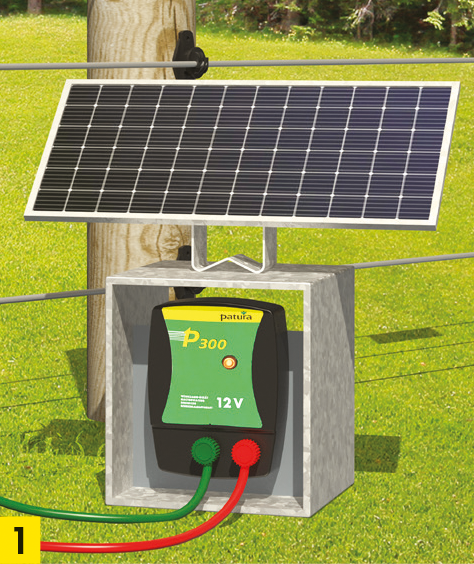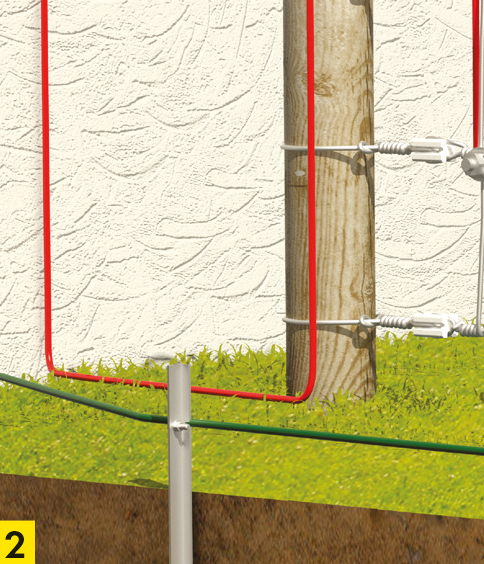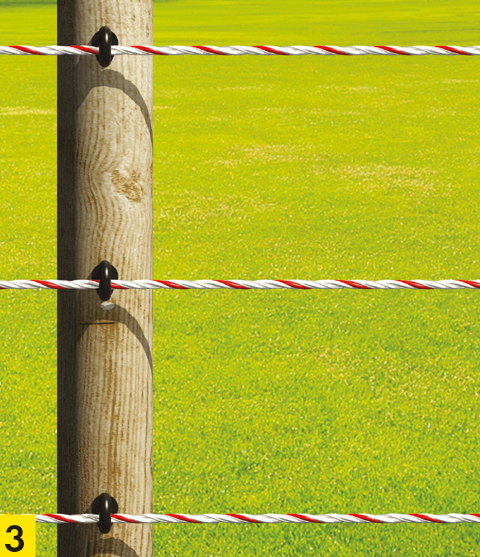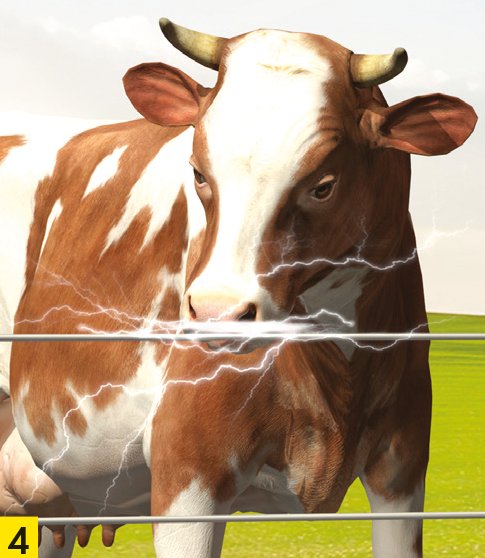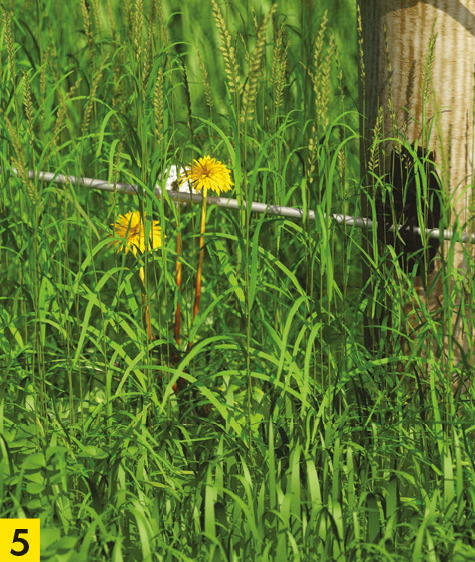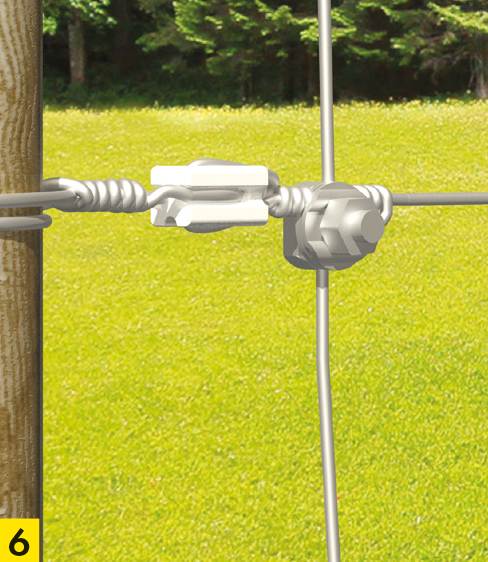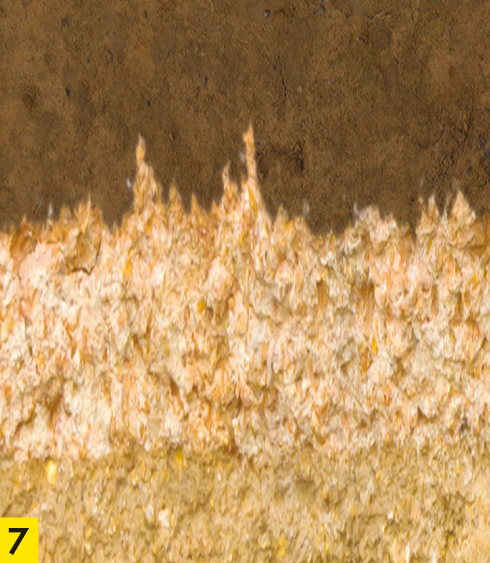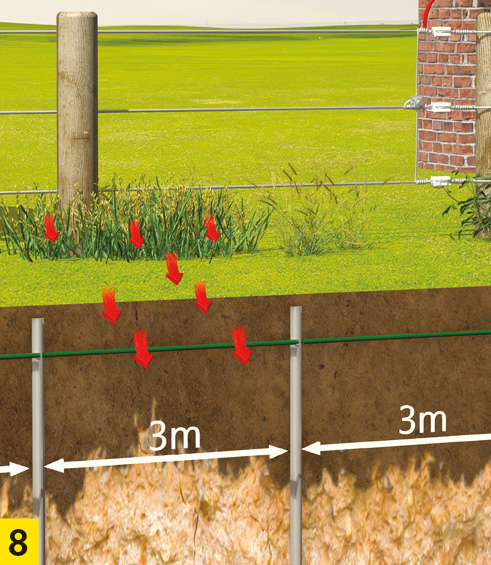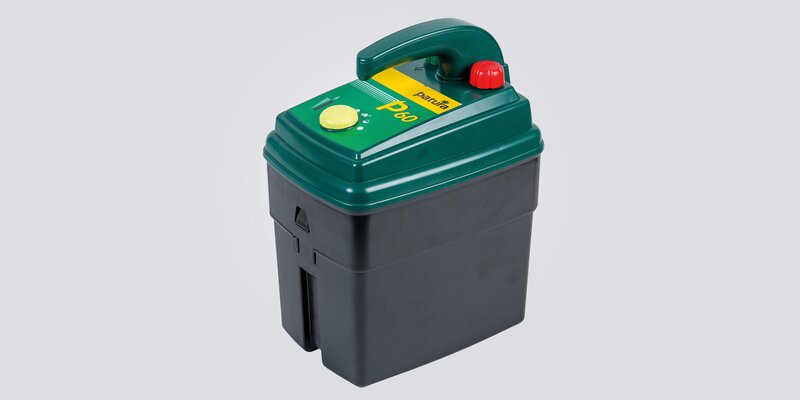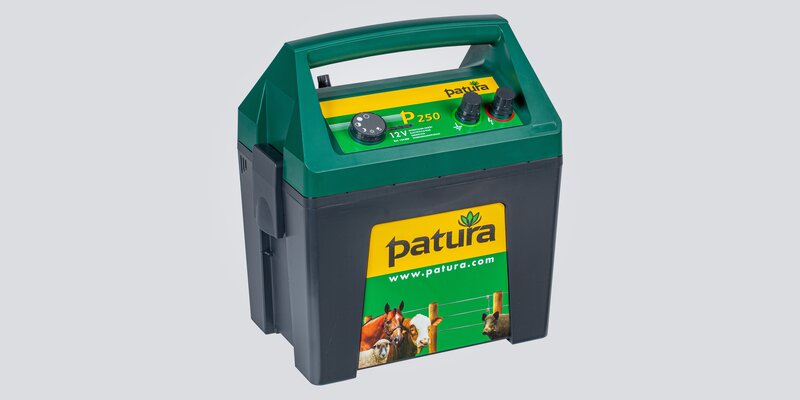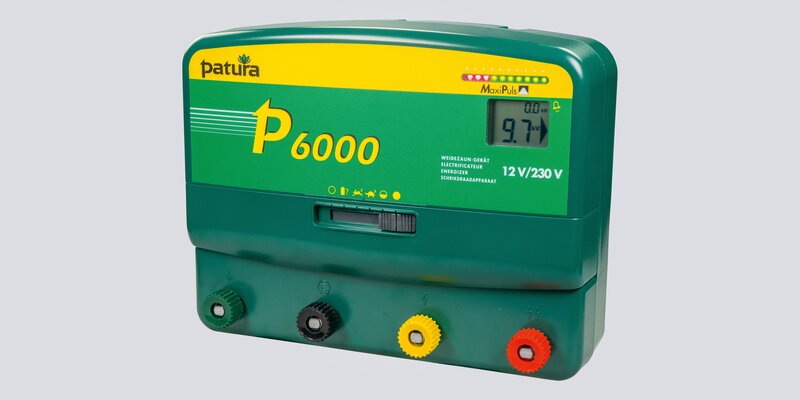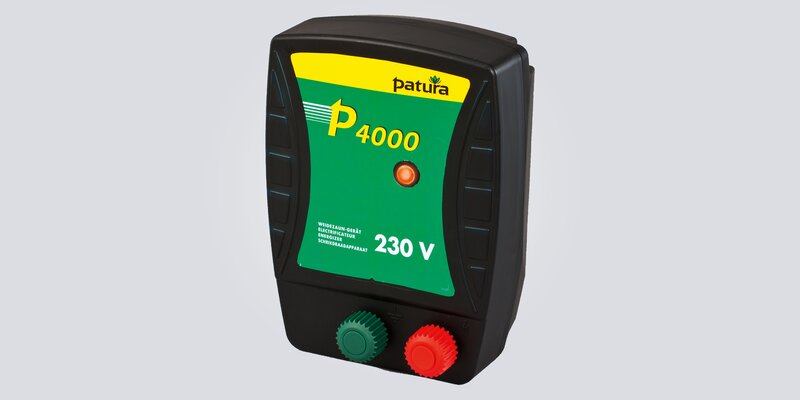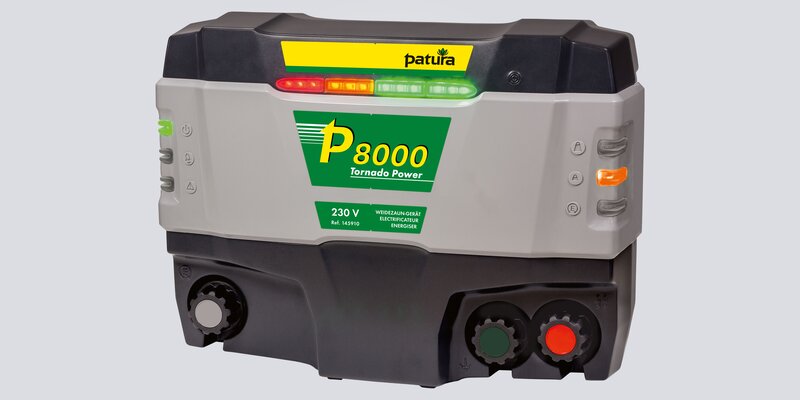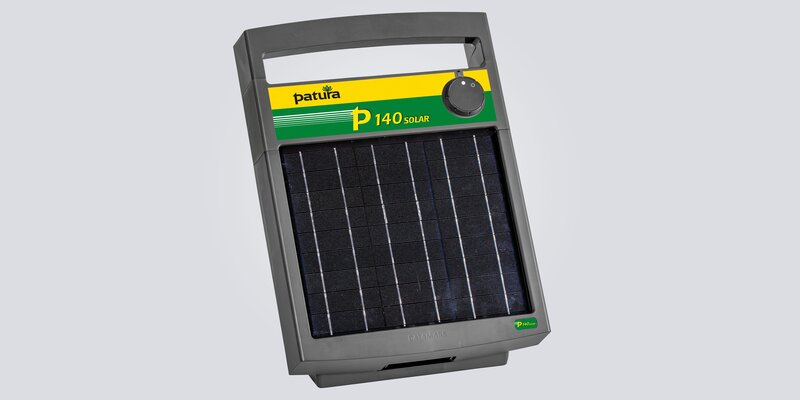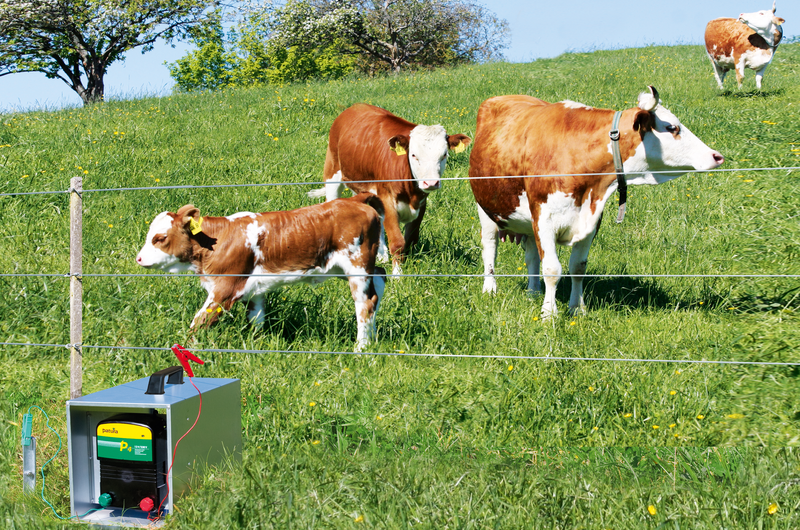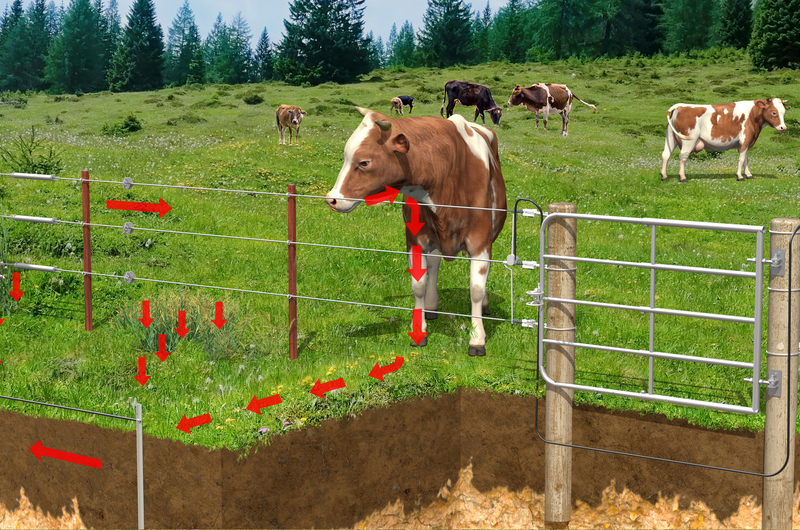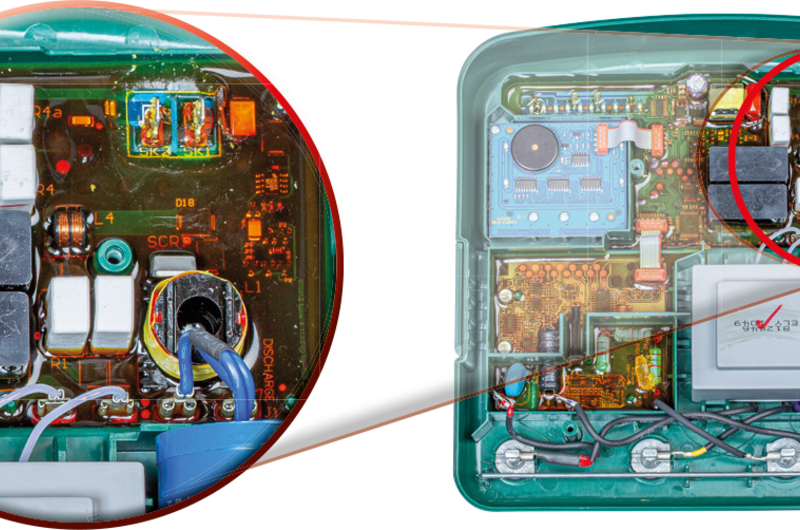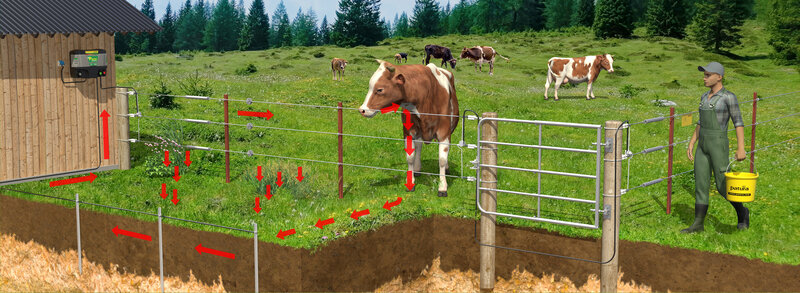
An electric fence circuit consists of 8 main parts:
1. The energiser produces regular current pulses.
2. The supply lines conduct the pulses to the fence and from the earth stakes back to the device. Long distances can be bridged in this way.
3. The fence wire carries the current along the fence. Wires and connections must be good conductors and screwed tight.
4. When an animal touches the fence, the current flows through the animal body painfully but harmlessly.
5. Vegetation creates short circuits and dissipates the current into the ground, it is lost and no longer available in the fence.
6. Insulators separate the fence wire from the posts and ensure that the current is not diverted into the ground.
7. The current flows through the ground. Different soil types have better or less conductivity.
8. The earth stakes absorb the current in the soil and return it to the electric fence unit via the earth connection line.
Three factors decide on the optimal function of your electric fence
Conductivity
Earthing
Energiser
1. Conductivity of the fence wiring
Long lengths of electric fence can only function using fence wiring with good conductivity. When using 4 wires of 2.5 mm steel, fences up to 120 km can be considered when there is no vegetation. Using only one wire of the same, the maximum length drops to 30 km.
If you go down to a compact-polywire that has 6 x Ø 0.20 mm stainless steel strands, the maximum length of fence goes down to 250 m. If there is vegetation at the fence, then these figures drop considerably. Depending on the desired fence length and the anticipated vegetation level the fence wire must be selected carefully. Please refer to section "Fence Wires, Polywires, Polyrope, Polytape" for more information.

2. Earthing
An electric fence is a circle in which current flows. The current which travels through the wire, the animal and through the ground cover into the soil, needs to flow back to the energiser with the help of earth stakes.
As the soil is a poor conductor, particularly when it is dry, sandy or stony, it is important to ensure an adequate earth system, so that the energiser can reach its full performance.
1. Select the appropriate number of earth stakes depending on the device power (recommended for the respective device).
2. A large number of the recommended earth stakes may be necessary for low conductive soils and high device power.
3. Make sure that all connections are screwed tightly.
4. All parts of the grounding system must be hot-dip galvanised or stainless steel – rust insulates!
5. Check the grounding after installation and during operation regularly - especially in dry conditions.
Summary:
Drive 3 galvanised earth stakes of 1 m length into the soil 3 m apart and connect them with screws and high voltage cable.

3. The Energiser
An efficient energiser is the foundation of the basic power supply to your electric fence. The output power of an energiser is specified in joules.
Four factors play the decisive role for the selection of a propper device:
- Vegetation load on the fence
- Fence length and number of wires
- Type of animal
- Power supply 9 V / 12 V or 230 V
You will find detailed information on the selection of the energiser in the tables for the particular energisers.
Summary:
Up to 500 m no vegetation – min. 0.25 joules
Up to 1000 m normal vegetation – min. 2.0 joules
Up to 1000 m heavy vegetation – min. 6.0 joules

